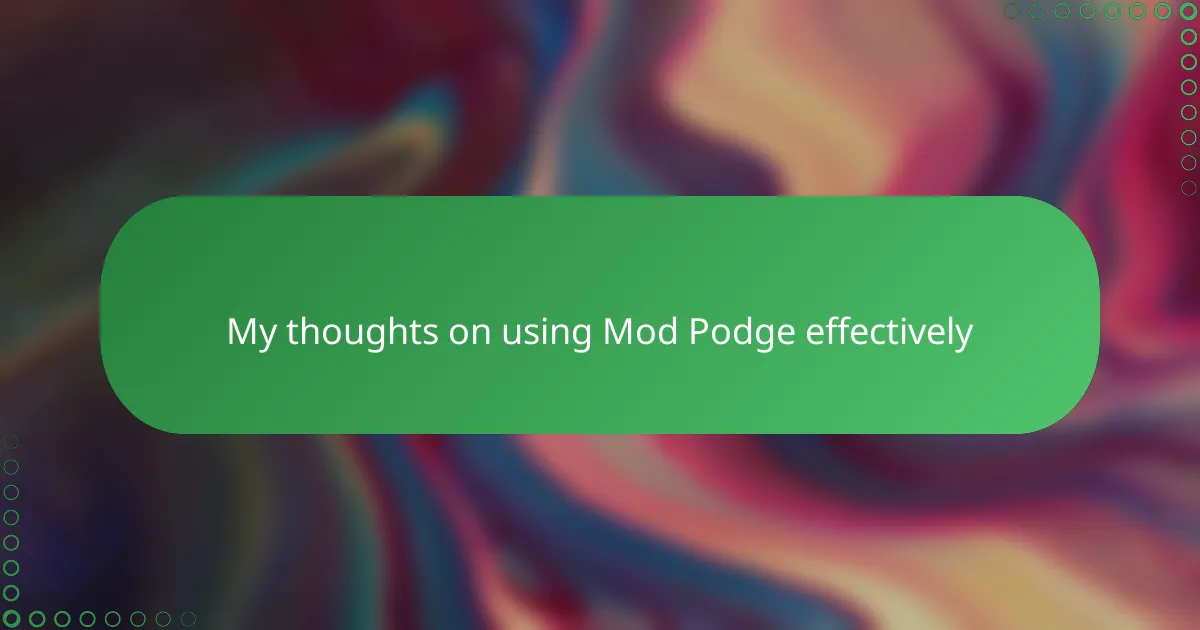Key takeaways
- Mod Podge is a versatile three-in-one product that serves as a glue, sealer, and finish and comes in various formulas for different effects.
- Proper preparation of paper, including cleaning and gentle sanding, is essential for achieving a smooth application of Mod Podge without bubbles or wrinkles.
- Applying Mod Podge in thin layers and sealing edges carefully prevents issues like peeling and ensures a professional finish.
- Experimenting with different finishes and taking time for final touches enhances the overall quality and aesthetics of crafted projects.
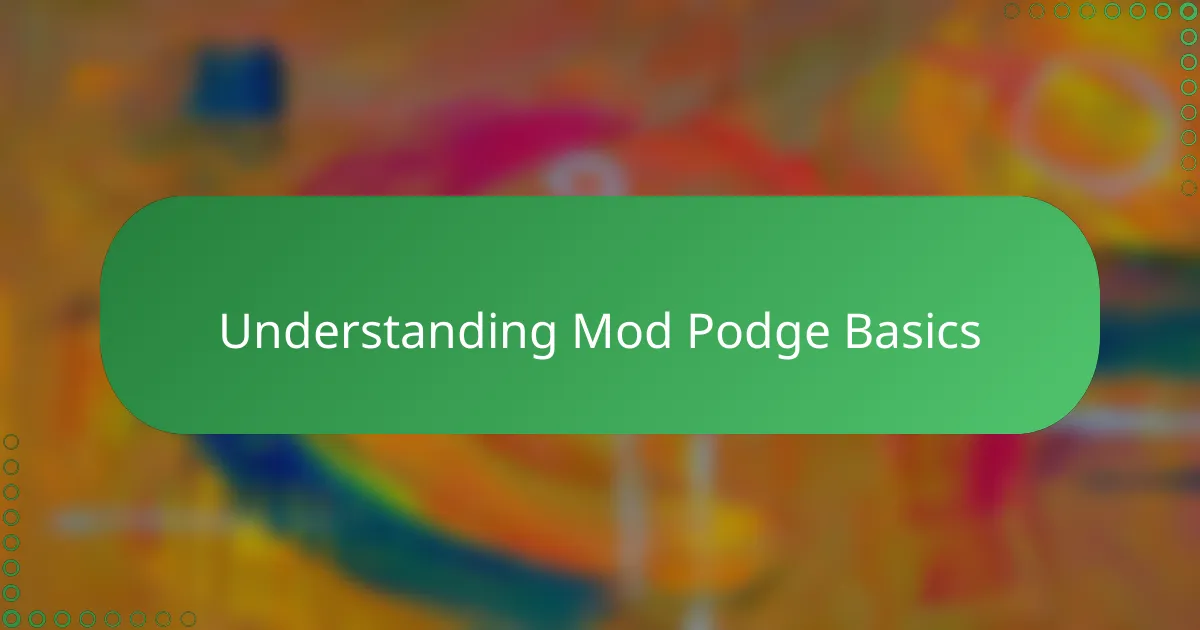
Understanding Mod Podge Basics
When I first started using Mod Podge, I underestimated how versatile it could be. At its core, Mod Podge is a glue, sealer, and finish all in one—a three-in-one product that simplifies many crafting steps. Have you ever struggled with messy glues or unclear finishes? Mod Podge solves those problems by providing a smooth, even layer that dries clear.
What surprised me most was how many different formulas Mod Podge offers, each suited for specific materials or effects. From matte to glossy, outdoor to fabric-friendly, choosing the right type can really impact your finished craft. I learned this the hard way when I applied a glossy formula to a delicate paper and ended up with wrinkles and bubbles—lesson learned!
Understanding Mod Podge’s drying time is also crucial. Patience pays off here; the surface may feel dry quickly, but it takes longer to fully cure. Have you ever rushed your project only to see the finish peel or crack later? Waiting a bit longer has saved me from that frustration many times.

Types of Mod Podge for Crafts
Mod Podge comes in several types, each designed to tackle different crafting needs. For example, the Matte formula is perfect when you want a smooth, non-shiny finish that doesn’t distract from your paper design. I often reach for this one when working with handmade paper, as it keeps the delicate textures looking natural.
Then there’s the Glossy and Satin versions, which add that beautiful sheen many crafters love. I remember using Glossy Mod Podge on a greeting card project—it really made the colors pop, but it also showed every little imperfection, so application had to be extra careful. Have you noticed how the finish can completely change the vibe of your piece?
Fabric Mod Podge is another interesting type I tried recently for a paper-fabric mixed collage. It’s more flexible and washable, which surprised me—this flexibility saved my project from cracking. Outdoor Mod Podge also exists for crafts that need weather-resistance, which is great if your paper art faces sun or rain. Knowing these options has made me appreciate the product’s adaptability much more.
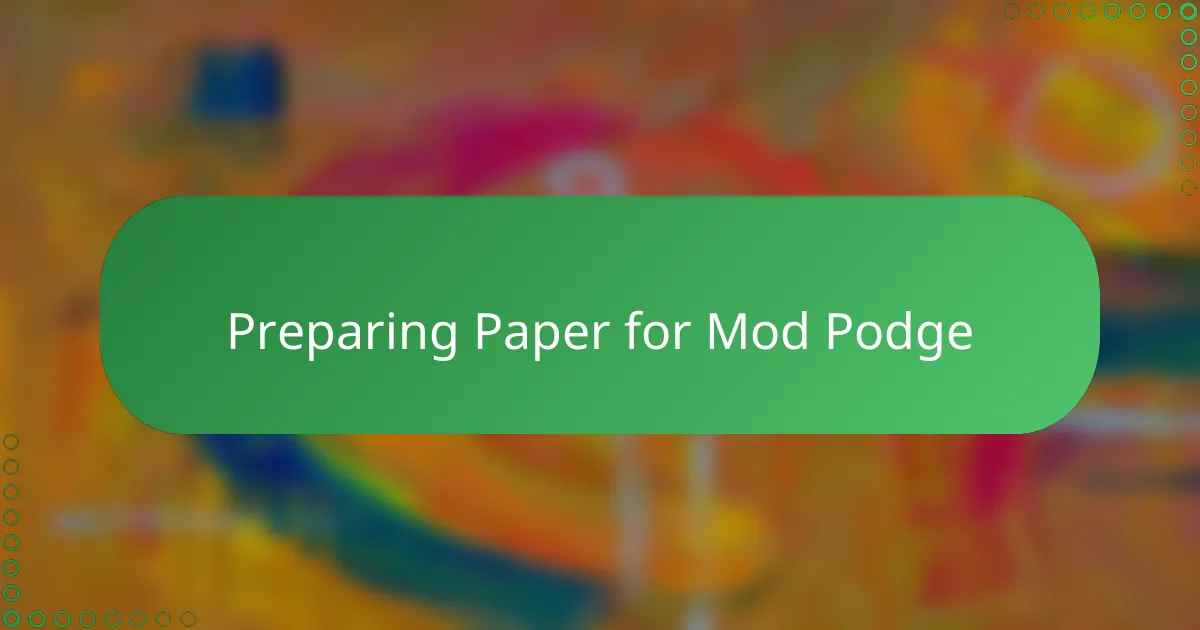
Preparing Paper for Mod Podge
Preparing paper properly before applying Mod Podge is something I’ve learned to never skip. Have you ever tried sealing paper without prepping it first, only to find bubbles or wrinkles ruining your work? I found that gently flattening my paper and making sure it’s clean and dry sets the stage for a smooth application.
One trick I swear by is lightly sanding the back of handmade paper if it feels too rough or uneven. It might sound odd, but this little step helps the Mod Podge adhere better without soaking through or causing warping. I was skeptical at first, but after trying it, my finished pieces looked so much cleaner and flatter.
Also, cutting your paper slightly larger than the intended project size saves headaches later. When you apply Mod Podge and the paper expands a bit from moisture, those extra edges let you trim for a perfect fit. Trust me, having to fix curled edges after drying is not fun—it’s something every crafter wants to avoid!
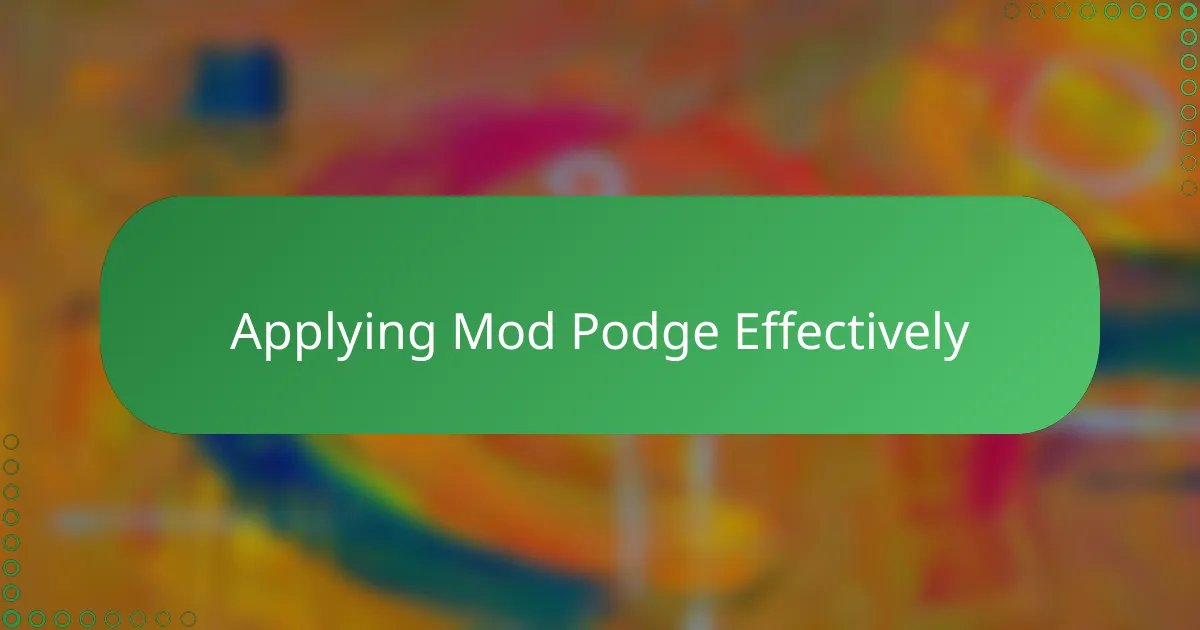
Applying Mod Podge Effectively
Applying Mod Podge effectively starts with using the right brush or sponge. I used to rush this step, grabbing whatever was closest, only to end up with streaks or bubbles. Using a soft, flat brush or a smooth foam applicator has made all the difference—I get a nice, even coat that dries flawlessly. Have you ever battled with brush marks ruining an otherwise perfect design? This simple switch helped me avoid that frustration entirely.
Another important tip I learned is to apply Mod Podge in thin layers. At first, I thought slathering it on thick would seal better, but nope—it just prolongs drying time and causes wrinkles. Patience here really pays off. Applying several light coats with drying time in between has given me the smoothest finish and the least shrinkage or bubbling.
Finally, don’t forget to seal the edges carefully. I once overlooked this, and the edges lifted after a few days, which was disappointing. Running your brush gently along those edges to lock everything down keeps your paper perfectly adhered. It’s such a small detail, but it’s saved my projects from peeling apart more times than I can count. Have you noticed how these tiny steps can elevate your craft from amateur to pro?
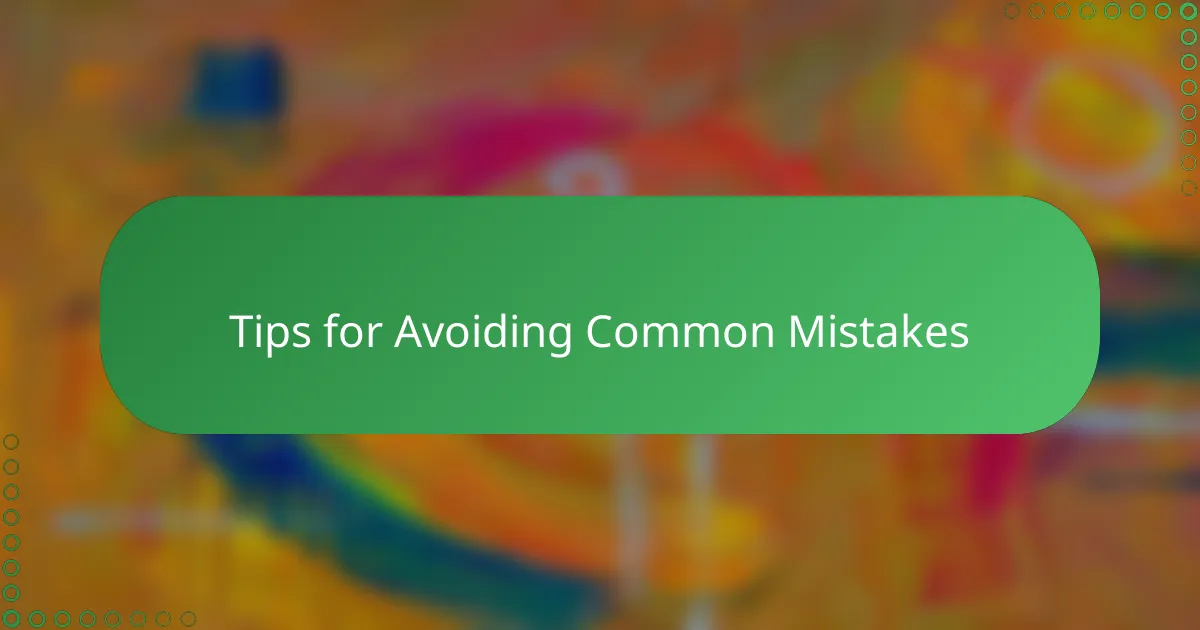
Tips for Avoiding Common Mistakes
One mistake I made early on was applying Mod Podge too thickly, thinking more would mean better coverage. Have you ever done that? It actually backfires, causing wrinkles and uneven drying. Since then, I always remind myself to go slow and build up thin layers—this little shift has saved me from so much frustration.
Another common pitfall is not stirring Mod Podge before use. It might seem trivial, but it’s easy to overlook. When I skipped this step once, the finish dried cloudy and uneven, which was so disappointing. Now, a quick stir ensures a smooth, consistent texture every time.
Finally, I can’t stress enough the importance of cleaning your brush right after use. Leaving Mod Podge to dry on your brush turns it into a stiff mess, making future applications a nightmare. I learned this the hard way, and since I started washing my tools promptly, my projects have been smoother and less stressful. Have you encountered brush disasters too? Taking that extra minute to clean really pays off.
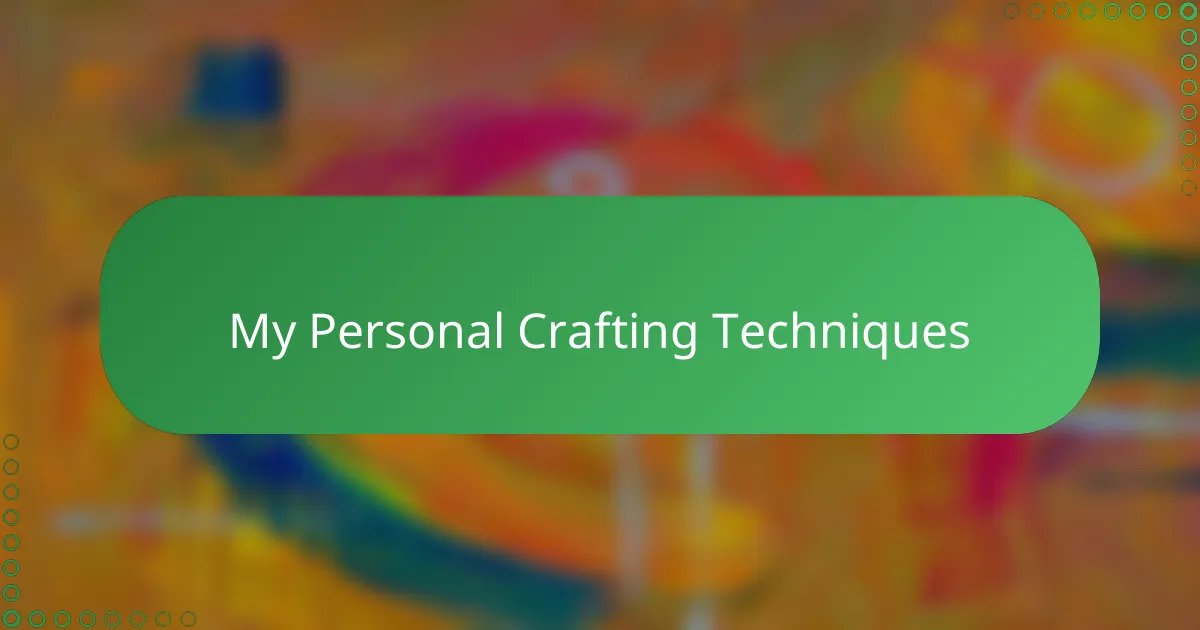
My Personal Crafting Techniques
I like to start each Mod Podge project by setting up my workspace just right. Having good lighting and keeping my tools within arm’s reach helps me stay focused and avoid those frustrating moments when I realize I forgot something midway. Do you find your crafting flow improves when your environment is organized? For me, it makes a huge difference.
When applying Mod Podge, I always remind myself to be gentle and patient. I’ve learned that rushing or pressing too hard can disturb the paper underneath, leading to wrinkles or bubbles that are tough to fix later. It might seem like a small detail, but treating the materials delicately really elevates the final result—I’ve seen the difference in my own work every time.
I also like to experiment with layering different Mod Podge finishes on a single piece to create subtle effects. For instance, a matte base with a light glossy topcoat adds depth without overpowering the paper’s texture. Have you tried mixing finishes like that? It’s become one of my favorite ways to add a personal touch and keep my projects visually interesting.

Enhancing Crafts with Finishing Touches
Adding those final finishing touches to a handmade paper craft with Mod Podge really feels like the moment when everything comes together. Have you ever noticed how a carefully applied topcoat can transform a simple piece into something polished and professional? For me, sealing the surface gently but thoroughly has always brought a rewarding sense of completion, as if my craft is ready to proudly stand on its own.
I’ve found that experimenting with the sheen level—whether matte, satin, or glossy—makes a surprising difference in how the artwork communicates mood. Sometimes a soft matte finish enhances the delicate textures of handmade paper perfectly, while a glossy layer highlights vibrant colors and details that might otherwise get lost. Choosing the right finish is almost like storytelling; it’s a subtle way to guide the viewer’s experience.
Don’t underestimate the power of carefully sealing edges and corners either. In one project, I skipped sealing the edges and, to my frustration, the paper started to peel after a few days. Since then, I always take my time with those tiny borders, because they’re what keep the craft intact for longer and look just as flawless as the central design. Have you had a similar lesson about those small yet critical finishing steps?
